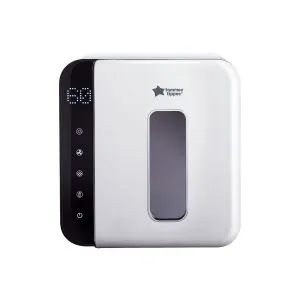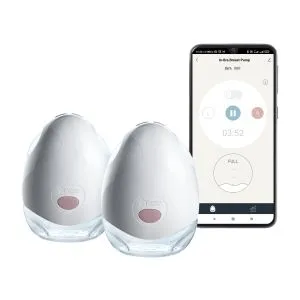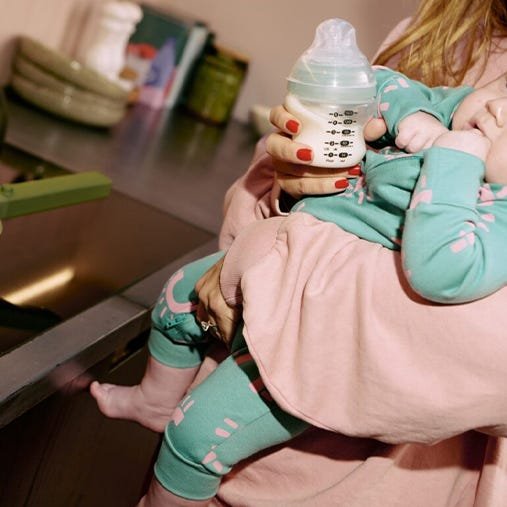Sterilizing is one of the most important ways of protecting your baby so that they stay safe and healthy.
Here's the lowdown on when, why, and how to sterilize baby bottles.
Why should you sterilize baby bottles?
Using sterilizing equipment to clean baby bottles goes beyond just basic cleaning, it gives your little one added protection against bacteria that can cause some nasty tummy bugs.
When to sterilize baby bottles
You should always sterilize all the parts of baby's bottle, including the teat, hood and any connectors before you use it for the first time, whether it's brand new or has been used before. You'll need to sterilize after every use too. Anytime your bottle is used bacteria starts to grow in the milk residue so sterilization helps to remove all those nasty germs.
Ways to sterilize your baby bottles
Back in the day, parents used to boil up a pan of water on the stove to sterilize baby bottles, and that still works, but happily there are quicker, easier and safer ways today.
Always wash your baby bottles and teats in hot soapy water first to remove as much milk bacteria as possible prior to sterilization. Most bottles can be cleaned in a dishwasher (top shelf only) however they could be contaminated with other food debris so washing bottles separately in hot soapy water is the best method.
You can safely sterilize baby bottles using:
- Hot water by boiling or steam sterilizing in a microwave or electric sterilizer
- Cold water and sterilization liquid or tablets
- UV light
How does UV sterilization work?
UV or ultraviolet light is a fuss-free way for you to sterilize your baby's feeding equipment. It kills viruses* and 99.9% of harmful bacteria - all without the use of chemicals, heat, or steam!
Short wavelength ultraviolet light (aka UV-C light) kills micro-organisms on the surface of an object by penetrating the cellular wall and deactivating bacteria.
It may sound like something from a sci-fi script, but UV light is actually regularly used to clean hygiene-strict settings such as hospitals, industrial kitchens, and laboratories - now you can use it to clean your baby's bottles and soothers, too!
Can I sterilize bottles in a microwave?
Yes! Sterilizing baby bottles in a microwave really speeds things up. Microwave sterilizers heat water to generate steam which sterilizes baby bottles, teats and feeding accessories. They're small and compact and do a super quick job of sterilizing, usually in around 6 minutes. They're great for travelling too, as they're more portable than electric steam sterilizers.
How to sterilize baby bottles in a steamer
You could create your own steam sterilizer by putting bottles and teats inside a metal rice or pasta drainer over a pan of boiling water. But you have to make sure all your cooking gear is clean and isn't likely to transfer smells and tastes, your little one won't appreciate garlic flavoured milk.
How to sterilize baby bottles in an electric steam sterilizer
Electric steam sterilizers are a real time saving piece of kit. You can usually sterilize 6 bottles at a time and the process can take as little as 6 minutes. Once your baby's bottles and feeding things are sterilized you can store them inside, so they remain sterile for up to 24 hours. Some will even sterilize and dry baby's bottles in one go.
They're a bit more expensive to buy and take up a bit of counter space, but electric steam sterilizers are really quick and convenient, especially when baby's yelling for a bottle. Larger sterilizer units are also good for sterilizing bigger items such as breast pumps.
How to sterilize baby bottles using cold water
If you don't have any way of heating water to sterilize your baby bottles then sterilizing tablets or liquid are also effective at protecting against bugs and bacteria. This can be a great option if you're travelling. Just make sure you follow the instructions carefully.
How to store sterilized baby bottles
Once you've sterilized baby's bottles, you'll want to use them to feed your baby straight away or store them safely, so they don't pick up any germs or bugs. Reassemble the clean and sterilized bottles using the teat tongs provided with the sterilizer, taking care not to touch the teats. Once assembled you can store those bottles for approximately 24 hours before you need to pop them back in the sterilizer. Don't leave sterilized baby bottles out on work surfaces as they will quickly become unsterile.
If you use a microwave or electric steam sterilizer, you can store baby bottles inside for up to 24 hours if the lid remains closed. You can also keep sterile bottles in a sealed container in the fridge to help avoid any germs or bacteria. Just bear in mind that the container must be sterilized too.
*Tested against Coronavirus (tested to EN 16777) and Influenza H1N1.











